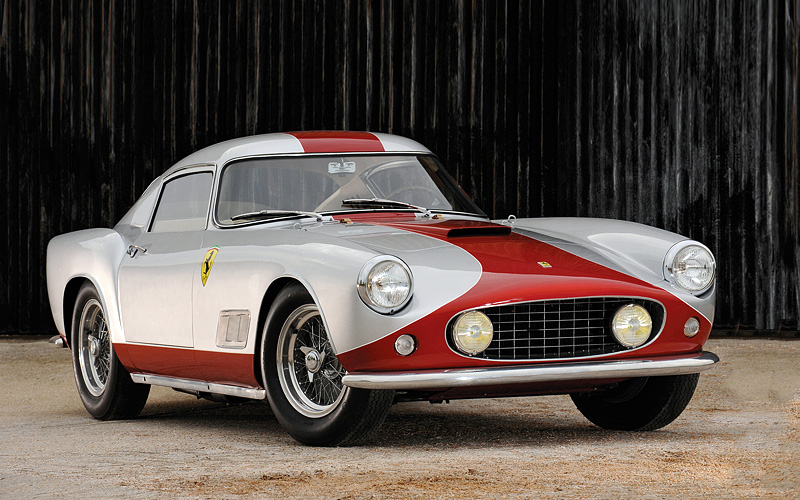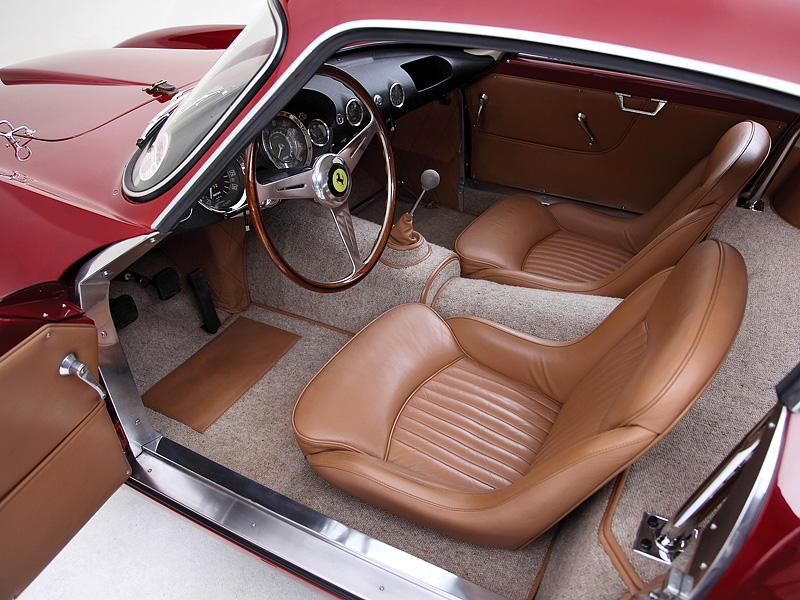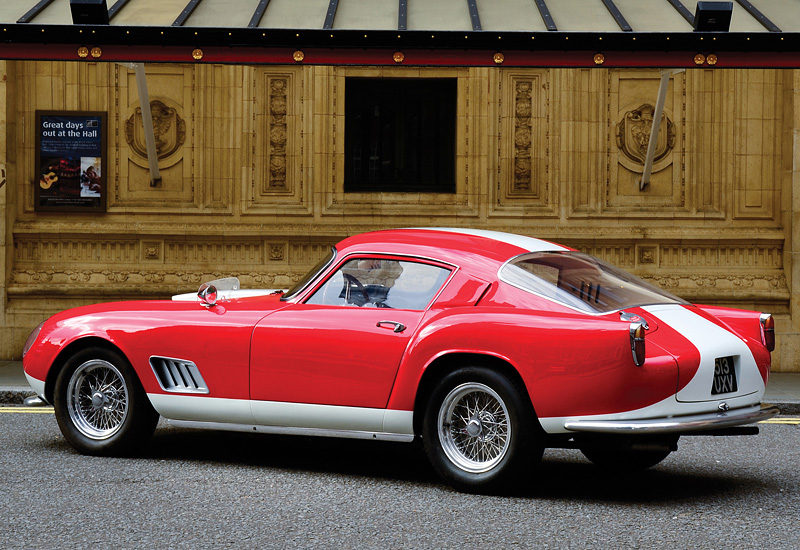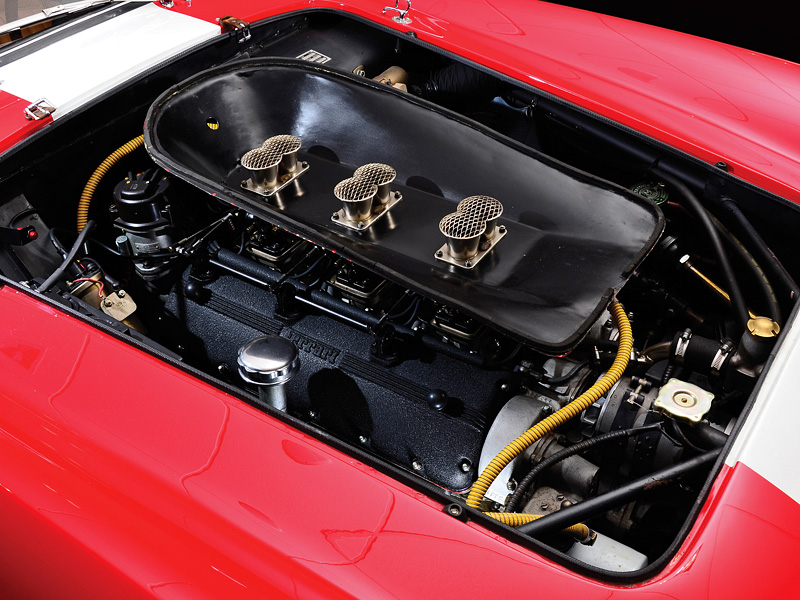FERRARI. So many times we pronounced this word with delight in our voice. So many times our eyes followed it with admiration. So many times we sighed at the echoing sound of its roaring engine.
The famous motor racing driver Enzo Ferrari could be called a rather rough or sometimes even severe person. He often did not forgive any faults to other people and loved his cars desperately. He treated them like his own children and let off everything. In 1939 a former Alfa Romeo test driver founded his own car manufacturing company to make the impossible possible. Enzo Ferrari was dreaming not only of creating a racing team. He wanted the best Italian pilots to win the races driving the best Italian cars.
15 years later Ferrari produced around 200 street-legal cars and 250 racing cars. Enzo addressed various design companies making the cars look different. 1954 250 GT model started a long-term and effective cooperation with Pininfarina design studio. It was Pininfarina which created a body for the short-wheelbase chassis. Ferrari 250 GT became a starting point for a great number of high-grade sports cars produced by this company.
Production of Ferrari 250 GT model with Gioacchino Colombo 3-litre engine gave Ferrari an unofficial title of “master of roads” for more than 10 years (up to 1968). Around 20 models — including those for the races — were built on its base and upgraded by different studios and engineering groups.
The first Ferrari 250 GT was presented at the 1954 Paris Motor Show. The car was fitted with a four-speed gearbox, had a simple ladder frame and its wheelbase was 2600 mm in size. It was the first Ferrari car using independent front suspension with coil springs. It also had a solid axle rear suspension with semi elliptic leaf springs. 3-litre 12-cylinder engine was producing 240 hp at 7000 rpm. Manual transmission had 4 gears, was fitted with synchronisers and shifted with the help of a thin and long gear lever. By today’s standards the performance and steering of the car were rather moderate but back in 1954 it was a real breakthrough.
In 1956 Ferrari 250 GT won the famous Tour de France race giving the model an unofficial Tour de France (TDF) name. The car’s design had changed several times during the long period of its production. All bodies were designed by Pininfarina studio. Different variants of Ferrari 250 GT were produced up to 1968 and were very popular among car enthusiasts.
Ferrari 250 GT. Light and streamlined. The queen of roads and racing tracks. Watching it go by with eyes full of delight, the drivers could recognize this model by a distinctive outline of its rear part. Two unusual fins following the wheel housing were giving an elegant emphasis to the vertical headlights. A wide range of colours was offered to the fastidious Ferrari customers. Sergio Scaglietti, the head of Pininfarina company, provided dozens of different colours: gold metallic, Parisian sky blue, silver and, of course, Ferrari traditional bright red colour. Classic design of 250 GT was completed with Borrani multi-spoke wheels. The latter were not only aesthetically beautiful but were also fitted for fast replacement at the pit-lanes during the races.
All GT Tour de France cars were different. Rear-wheel driven coupés “berlinetta” with either hard tops or convertibles were real supercars. Some of them were especially good. First of all, it concerned those of them in which Enzo Ferrari had personal interest. And though Enzo Ferrari tried to be a cold-blooded and open-minded leader, due to his contradictory Italian nature he was giving the legendary cars to those drivers whose piloting manner suited perfectly the characteristics of the car. This fact is an excellent demonstration of 250 GT unique character.
In half a century the cars with the Prancing Horse badge — an emblem which Enzo acquired from an Italian World War I ace Francesco Baracca — scored a lot of victories in different racing series.
The similarity between 250 GT Tour de France and other Ferrari cars is obvious. The distinctive feature of these cars was in the form of their front part, specific air intake and headlights configuration. The classic 250 GT dashboard was both plain and elegant. A small indicator in its middle was showing water temperature, a larger indicator on the right was showing speed, and tachometer was on the left side. An aluminium steering wheel with black and yellow Prancing Horse logo was finished with wood. Some of the models were equipped with bumpers which were obligatory for street-legal cars according to road traffic regulations.
Ferrari 250 GT could be overtaken on Italian highways only by one of its upgraded copies. And one day it appeared. There was no equal to 1969 Ferrari SWB. Seven versions of Tour de France cars with a more rounded front part were created at Pininfarina studio. And who could have thought that the queen of the 60’s — a model of a unique supercar — could reach today the price of 5 million dollars. But let’s talk about it in the next chapter as the fate of Ferrari SWB is as unique as the fate of Italy itself...
Photo: www.a777aa77.ru













